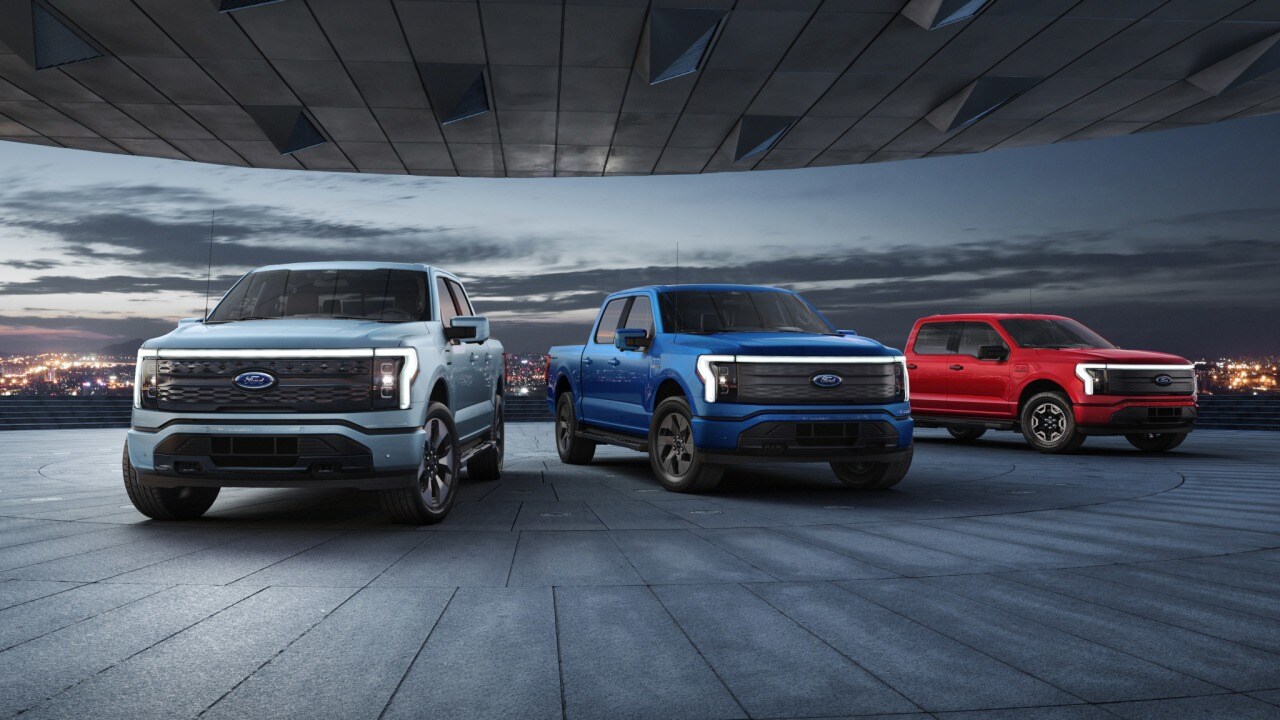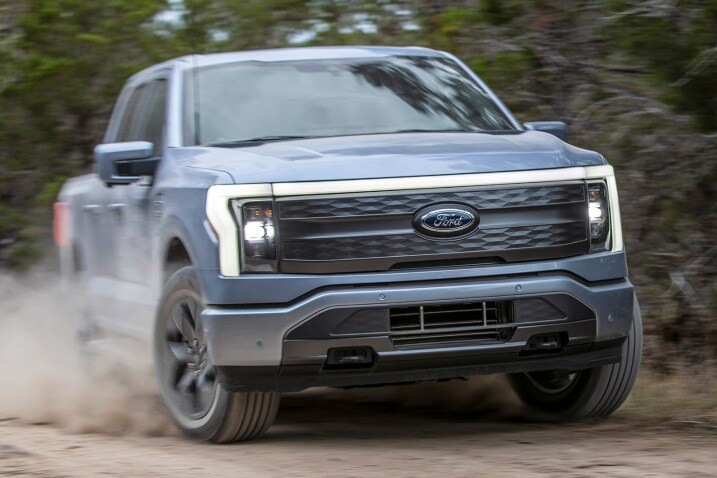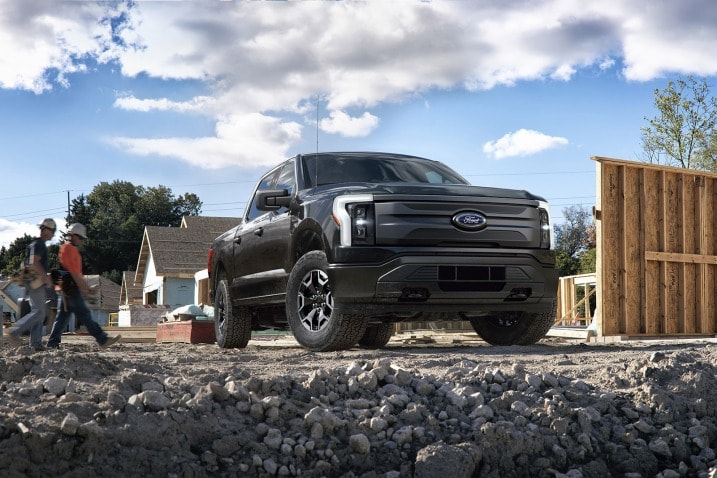- Linda Zhang, Ford's chief engineer for the Lightning EV, is a leader behind the all-electric pickup.
- As the market ramps up for electrification, the Lightning is an important vehicle for Ford and it launched ahead of its major competitors.
- The Blue Oval expects EV sales globally to reach 50% by 2030.
Response to Ford Lightning Is Surprising Even to Its Chief Engineer
The F-150 design of Ford's all-electric pickup is no accident, but the runaway success is still unexpected.
Linda Zhang is wearing matching earrings and a necklace featuring tiny lightning bolts, a nod to the vehicle she helped bring to life. Zhang is Ford's chief engineer for the F-150 Lightning, the Blue Oval's first all-electric pickup truck, and there's no doubt she is still excited about it after months and months of development. Ford unveiled the Lightning in May of 2021, hoping for a solid response; the result blew the brand's expectations away. In the first four days, nearly 70,000 reservations poured in for the EV.
Three-quarters of Lightning buyers are new to Ford, which is a surge the company didn't expect.
"We have been fortunate to be able to pull a lot of new customers to Ford," Zhang told Edmunds. "And about half of our Lightning buyers are new to trucks, which is very interesting."
Am I Ready for an EV?
- EV ownership works best if you can charge at home (240V outlet) This typically means a 240V home installation, or other places your car is parked for several hours each day. Don't expect a regular household outlet (120V) to suffice.
- Adding a home charging system is estimated to cost $1,616 in This is an estimate for your area. Using your address and the answers you provide, Treehouse can provide a more accurate price.
- Edmunds is partnering with Treehouse, an independent provider of home EV installation services. Learn more Edmunds customers receive a 10% installation discount and 4% smart charger discount. Discount excludes permit, hosted inspection, and load management devices. Valid for 30 days.
Reinventing the F-150 as an EV
Zhang says pre-launch research included a substantial number of non-truck buyers. The Ford team discovered that SUV owners love the mega front trunk, which fills the gap for protected cargo space that a pickup truck typically lacks.
"Truck owners love their trucks, and we wanted [the Lightning] to look like the F-150," Zhang told Edmunds. "There will be a transition; some folks may not be comfortable with it right now but getting behind the wheel and seeing how it improves your life in many ways can be convincing."
It helps that the Lightning is based very closely on Ford's perennially popular F-150 pickup. Ford didn't start from scratch, which makes a big difference in how Ford fans feel about the truck and how they relate to it, and it streamlines production significantly. Ford has invested $950 million into factory expansion and added 750 jobs for the Lightning alone.
"It was initially an early adopter play," Zhang said. "But we leveraged the F-150 scale to keep costs down, and it helped our customer with the transition to an electric truck."
Zhang drives a Lightning herself back in Michigan, where she lives and works. She's the mother of two teenagers and they have even had a chance to drive the electric pickup during a family road trip, during which Zhang says their energy efficiency wasn't quite as good as hers. The Lightning takes about 40 minutes to charge up from 15% to about 80% capacity, and the truck can plot a course that maximizes charging station accessibility along the way.
Our testing has revealed that the Lightning's charger tracking feature is far from perfect, but it's something an over-the-air update can certainly help remedy. Ford is also aware that truck buyers are mumbling about some range anxiety as it relates to towing, and Zhang explains the effects of towing with an EV is just science.
"It's physics, so any vehicle will have this issue," she says. "You're towing not just mass but more importantly, the frontal area; that plays into the aerodynamics."
Setting expectations properly
Part of Ford's EV strategy is to be accurate and transparent, the engineer asserts. The research team consulted with not just the lab testing data but a feature called Intelligent Range also culls driver data through the cloud in real time. For any inputs that might affect the range or your route, the feature adjusts the Lightning's range to reflect an accurate estimate of energy availability. For instance, climbing mountains and hills requires more energy and affects towing capability across the board. The Lightning also uses a feature called trailer validation, which creates a profile of the driver's personal trailer. As soon as the accessory is hitched up, the Lightning adjusts for the aerodynamics.
"The last thing we want to do is for a customer to expect 300 miles and not be able to make it," Zhang says.
Currently, Lightning production is not at full speed due to the unexpected consumer demand and supply chain challenges that have beleaguered the industry. Back in April, Ford CEO Jim Farley told The Verge that he's prioritizing semiconductor chips for the Lightning amid the current shortage.
"I don't see the chips as a constraint for Lightning," says Farley. "I definitely see it as a constraint for our company. But we're not going to produce 20 percent less Lightnings because we got 20 percent less chips for the F-Series."
Zhang expects to get up to full run rate by the end of 2023. In the meantime, truck fans and first time F-150 owners are all clamoring for this all-electric pickup.
Edmunds says
Basing the Lightning on Ford's best-selling F-150 was a masterstroke. Giving customers a foundation that's familiar is surely helping sell this groundbreaking pickup, and towing capability transparency will go a long way toward confidence.








 by
by